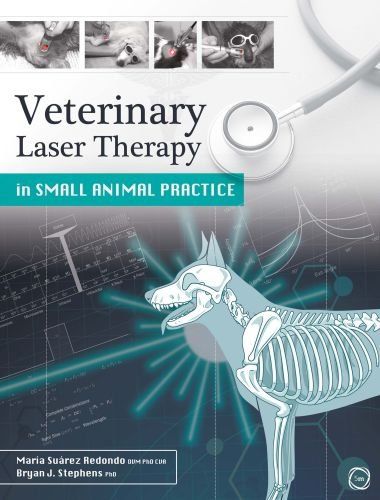Veterinary Laser Therapy in Small Animal Practice by María Suárez Redondo, Bryan J. Stephens published in July 2019.
Veterinary Laser Therapy in Small Animal Practice

Laser therapy has become increasingly popular in small animal practice and has many benefits to the patient – including reduced inflammation, faster tissue healing and less pain, and can be used in a wide variety of conditions including wounds, sprains and fractures.
Aimed at the first opinion vet, this very practical book covers the most important aspects of laser use in the practice environment. But it does so in a slightly different approach, taking two (often mis-aligned) perspectives – fundamental science and clinical applications – and combining them for a robust, useful guide to the practice of laser therapy.
It includes: how lasers work on tissue, how to use them in different scenarios, how to maximise results, how to use them on different conditions including soft tissue, musculoskeletal and neurological, how to integrate lasers with other therapies, when not to use lasers or use with caution, how to choose the equipment and implement it in the practice environment and promote the treatment to clients. The book also includes case studies to illustrate the use of lasers in practice on a range of conditions in different animals including dogs, cats and exotics.
Veterinary Laser Therapy in Small Animal Practice combines the clinical and scientific approaches reflected in the work of the two authors, showing how both sides together can help you have a positive impact on the patient.
When we first started writing and thinking about this project, we pictured at least two kinds of situations in which the book could be used. The reader might have some time to sit down and enjoy learning more about laser therapy; but the book should also be useful when a patient has just come in with a severe otitis, a bite wound, or a dehiscence after a fracture repair. Or maybe it is Mr. Whiskers who did not seem to improve after his last session and you want to modify some parameters to get the clinical response you expect.
Clinical results will probably be obvious shortly after you first implement laser therapy in your practice. But as treatments progress, you will also be faced with more challenging cases. In such situations, it becomes even more important to have a good knowledge of the parameters you can modify. This, together with a good review of what has been published and reported, will allow you to make more well-founded, customized choices for such patients.
Direct Link For Paid Membership: –
